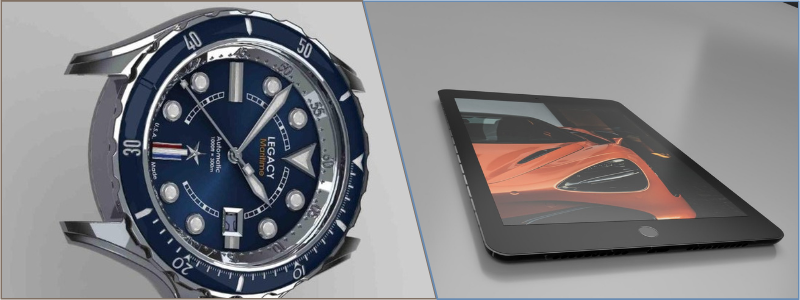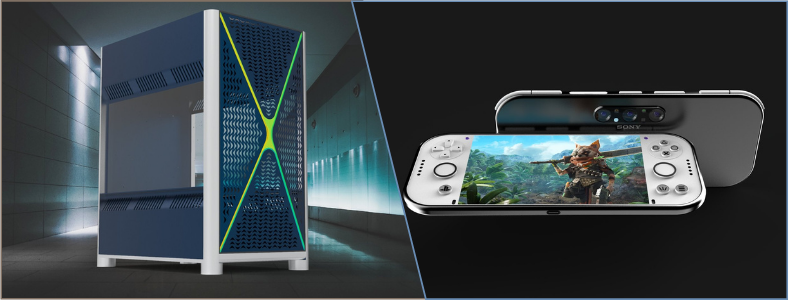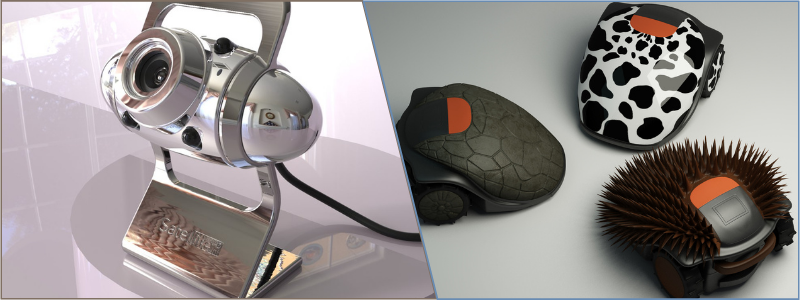In this article, we share essential information on how to price a new consumer electronic product for a profit on hardware manufacturing costs. No matter what product you sell, you want to make a profit with every unit purchased. However, setting the exact profit margin is not entirely a fixed mathematical formula but also a balancing act. A low-profit margin can attract customers and bring in a steady sales flow. On the other hand, using high-profit margin yields fewer sales, but more money is earned for every unit sold. The drawback is that you risk losing broader market positioning as the product prices out the budget-conscious customers.
RELATED: What are electronic manufacturing services (EMS) for new products & prototype design?
Table of contents
Pricing strategies – New consumer electronic product
For a new consumer electronic product design, like other mass-produced goods, any following pricing strategies are applicable. Some are simple mark-up methods, while others require more complex calculations.
Cost + profit pricing
Also known as mark-up pricing, this method is the most straightforward calculation for determining the intended profit margin. In essence, you start with a COGS (cost of goods sold) and add a percentage on top of it, and the sum is the price. The cost of goods sold is sometimes referred to as the landed manufacturing cost, comprised of all expenses incurred from developing the product to when it comes out of the factory and reaches the warehouse or distributor.
RELATED: How to calculate total manufacturing costs for a new product
Such fees cover the cost of manufacturing the product and the product design, tests, and certifications. For example, your flashlight keychain costs $50 per unit to make. That amount covers everything from material, labor, certificates, manufacturing, and company overhead (the labor cost already includes design work for both the electronic and enclosure). You determine how much profit to earn for each unit sold. If you want it to be 20%, the calculation is:
COGS
$50
(cost of goods sold)
+ Markup
20% of $50
= Selling price
$60
COGS + Mark Up = Selling Price $5020 % of $50 $60
A significant advantage of mark-up pricing is the straightforwardness of the idea. As long as you keep track of COGS accurately, you need to add a percentage to the number and calculate the selling price. The actual profit (in dollar value) can increase with every subsequent and higher production run. Large-volume production services in a single run usually translate to a lower manufacturing cost per unit. If you maintain the same price as the first batch, your profit grows.
The only possible drawback is that you don’t price it high enough. Mark-up pricing disregards the importance of competitors’ pricing and perceived customer value. A competitor may sell equivalent products with equal quality at a much higher profit margin without losing sales figures. It is only standard for customers to think that high-priced products are superior in quality compared to the more affordable ones.
RELATED: How to balance product manufacturing cost and product features for profitability
Sometimes a higher-profit margin is determined by the after-sale services such as warranty and customer support. The adage “you get what you pay for” is true for most products, but it can also be a mere fallacy, and this is where your marketing campaign comes in. Your goal is to convince the target market that your product design is just as good or perhaps better despite the price difference.

Competitive pricing
As the name suggests, competitive pricing is intended to outperform competitors’ electronic products. The formula is simple: conduct market research to determine how much other companies or brands price their products (or their profit margins) and then sell your products at lower prices. It is a widespread practice in the current electronics market conditions, in which there are many related products with near-identical specifications.
For example, a popular radio clock from a well-known brand sells at $30. Your new product has the same features, level of quality, and hardware configurations, but it can be challenging to gain a competitive edge at the same price. In addition to the product itself, the brand name often adds a perceived value. If the only possible differentiator is price, your product needs to be more affordable to attract buyers.
RELATED: Figuring out the financials: will your invention be profitable?
Bear in mind that this strategy does not require you to sell at a loss. Instead, it would be best if you found a way to lower the COGS to begin with. Market research should be done before or during product manufacturing, not after. The use of standardized electronic components and efficient PCB design can help reduce costs. Use PCB design software to keep track of your bill of material. Ordering the parts in large volumes can help decrease overall COGS, too. Factory partners and suppliers also offer their services at competitive rates. A seemingly negligible per-unit production cost can accumulate thousands of dollars in price difference.
When there is no other way to reduce the price during development, the last resort is to have a lower profit margin. It is a challenging proposition for smaller retailers because they must sell more products to earn the same amount of profit as the more prominent competitors do. Moreover, many customers are not inclined to buy the cheapest product on a shelf. The most effective way to avoid getting into such a price war is to design, develop, and sell unique electronic products. They don’t have to be one-of-a-kind, just distinctive enough to be different from most others. Focusing on a specific customer segment or leaning on brand appeal also makes sense.
Value-based pricing
Unlike mark-up pricing, where the price is determined only by COGS and profit margin without other considerations, value-based is a difficult balancing between what the customers want and need. The pricing is almost entirely based on how much the buyers think the goods are worth, not the actual math. Unusually, customers are fond of the perceived high value of products and willing to pay for them, despite being provided with more affordable alternatives.
RELATED: 10 costs of new product development (NPD) with design firms
A prime example of value-based pricing is none other than iPhones or just about every device from Apple. When significant competitors like Android-based smartphones keep adding more features, sometimes unnecessary ones, iPhones remain simple and focus on quality rather than quantity. It is not about having more low-quality parts but a small number of frequently used functions built with quality in mind. Apple is also more selective about the applications submitted for approval in the App Store. On the other hand, the approval process on Android’s equivalent application marketplace is much less rigorous. Finding a buggy app in the App Store is near impossible, but it is nothing unusual in Android’s comparable application marketplace.
Value-based pricing is the norm for luxury brands whose products are believed to enhance customers’ self-image and offer a unique experience. The companies behind the brands can afford the strategy because they have a stellar track record and the financial resources to run a consistent, creative marketing strategy. The advantage is clear, as in you can put your product at higher price points than direct competitors. However, perceived value is subjective, and there is no exact science behind the number as social and cultural factors influence it.

Keystone pricing
This is a simple pricing strategy typically employed by retailers to set a healthy profit margin. The process involves increasing the wholesale cost of a product to roughly twice as much to determine the retail price. For example, a product unit costs you $30 to acquire, and you want to price it at a 40% mark-up (rather than the typical 50%). Here is an easy formula:
| Wholesale cost per unit | : | (100 – mark-up percentage) | x | 100 | = | Retail price |
30 | 100 – 40 | x | 100 | = | 50 |
RELATED: How much do manufacturing services cost for your company prototypes, products & new parts?
Depending on the product type, keystone pricing may not be the most appropriate strategy. If the sale of a product comes with substantial handling and shipping costs, the process probably means you are not getting a high enough profit margin. The same thing applies to products of low-volume manufacturing (unique, high-demand, or rare in some sense).
Penetration/discount pricing
There is no denying that customers love discounts, whether with seasonal pricing, coupons, or other markdowns. Low prices (lower than what is indicated in the tag) attract more customers, especially the budget-conscious. The seller will see an increase in foot traffic, which gives the chance to offload unsold inventories and promote the non-discounted products.
On the flip side, discounts can give the seller a rather unflattering reputation as a bargain retailer. Penetration pricing is ideal when you want to introduce a new electronic product patent and build market awareness. Losing a profit percentage is a small price considering the amount of exposure the brand may receive. However, when used too often, customers may perceive your product as low quality and feel that the regular price is too much of a mark-up.
RELATED: Top 9 design engineering tips for reducing manufacturing costs on new product designs & prototypes
Price skimming
New electronic products usually sell at higher prices when they first come to market but gradually become more affordable. Computer and smartphone products are notable examples of this price skimming strategy. The purpose is to set the most extensive possible profit margin while demand is high and competition is low. As comparable products of the exact specifications begin to overcrowd the segment, the products become cheaper regardless of economic factors like deflation. Apple is known to implement the strategy to cover the cost of developing new products. Unless your new electronic designs have unique features no other brands can replicate, price skimming is value-based but without the value-added benefits. It will not work because customers will go for the more affordable options.
Multiple/bundle pricing
With the bundle pricing strategy, the price for two or more items is lower than that of each item sold separately. The practice is most commonly observed in the apparel industry but is not exactly unknown in the electronics market. You lose a percentage of profit for every bundle purchase, so it only makes sense if the strategy can indeed generate more sales. The idea behind bundle pricing is to create a higher perceived value at affordable prices in the hope of driving large volume purchases. For example, you sell a new portable audio player and a pair of earbuds as a bundle for $350 when each product design is priced at $200. You have a lower margin, so it is a waste of potential profit unless you see an increase in sales volume.

RELATED: How to price your product: the trick to making sales
The Cost Spreadsheet
One of the most common mistakes when calculating cost per unit is excluding the marketing and operational expenses. You cannot afford to ignore the importance of both because you rely on them to grow the business in addition to the product itself. Here is a simple example of a cost spreadsheet for an audio player that retails for $200:
| Cost | Expenditures | Expected Margin | Dollar Value |
| COGS | Bill of Materials (electronic and mechanical components engineering) and assembly. If this is your first attempt at introducing a brand-new electronic product to market, consider the tooling cost (usually a fixed cost for the enclosure manufacturing). Certifications and licenses are included. | 20% | $40 |
| Shipping and Logistics | The cost of delivering the products from the manufacturing facility to warehouses, shipping them to customers, and the storage facility. | 10% | $20 |
| Distribution Channel | The fees you must pay to compensate the channels of distribution, for example, retail stores (online and offline) and any third-party distributor.* | 20% | $40 |
| Marketing Campaign | Costs associated with a direct marketing campaign. There is no limit to how much you can spend as it all depends on your preference and budget. For this example, it will be the same as the cost for the distribution channel. | 20% | $40 |
| Overall cost | 70% | $140 |
- The fee varies depending on the type of product and the channel. An offline retailer may ask anywhere from 10–20%, while the fee can be 50% for online retailers.
For a $200 portable audio player, you can expect a gross margin of 30%, which translates to $60. The key term here is “gross margin,” as other costs are incurred as part of the product development and the business, such as enlisting prototype design services, hiring employees, and company overhead.
RELATED: How to reduce painful product development costs for your company
When to Offer Discounts
Now that you have an idea of the right price for the product, it is time to consider whether you want to set a discount and when. Unlike cost calculation, discounting is not more of an art than math. There is a little bit of “selling for lower profit” to all, but the more critical issue is providing better value for the right people at the right time. If you are selling a portable audio player, the right people must include everyone who likes to enjoy music on the go. They are audiophiles, and otherwise, they could use their phones. Also, people expect to see discounts during holiday seasons and celebratory days.
For example, you can anticipate an increase in sales numbers in the weeks before Christmas because people like to buy excellent electronics, whether for themselves or their loved ones. A portable audio player priced at $200 is on the lower end in the product category, so many of your customers are still young and will appreciate the discount.
RELATED: Business tips for new product design & development
Of course, it always seems like a good marketing strategy to offer discounts multiple times throughout the year. Still, it is best to avoid doing it too frequently as it will make your customers undervalue your products and distrust the regular price tags instead. Before you decide to offer discounts, consider these factors:
- Buyer’s response: This is about how your customers react to the lower price, specifically whether the discount affects their purchase decision. With some product design categories, such as printers and robotic pool cleaners, offering discounts regularly doesn’t make much sense, as most people won’t need to buy a new one for many years, unlike handheld devices, for example, digital audio players, cameras, tablets, or smartphones.
- Discount frequency: Discounting doesn’t just concern holiday seasons but opportunities for market penetration. While seasonality is always a key factor, there must be more than enough (public) special occasions to launch the discount. Any experience related to music would be ideal, as an international concert, but it can be other events such as national-scale sporting events, movie release weeks, or festivals. The temptation to offer discounts every holiday can seem too great to resist, but understand that you risk losing the opportunity to earn a more significant profit each time. Not every price cut can deliver a good market penetration result. Use accessories or simpler giveaways rather than discounts sometimes.
- Profit margin vs. volume: discount means a trade-off between how many units you sell and how much money you make. If you can earn $1,000 for every 20 units sold at a discounted price at a regular price, you have to deal considerably more to reap the same amount of profit. You have to be sure that lowering the cost will attract more buyers.
RELATED: Why it is cost-effective to hire freelancers for your product design business
After the discount period is over, sometimes it can be challenging to increase the price again and expect that sales will also return to normal. People who want to buy your products may even postpone their purchase until another discount.
Common Mistakes When Pricing
It should be clear by now that pricing is not merely about covering the cost of production and making some profit. Setting a price also concerns positioning your product in the market and identifying which portion of the target buyers is willing to spend as much money as the product asks. Without that basic knowledge, you can fall into pricing either too low or too high. Here are two common mistakes leading to the surprise.

- Low price, high volume
There is nothing wrong with the intention to sell at the lowest price possible and then make a lot of profit by a large sales volume. The “lowest possible price” refers to the “smallest profit margin,” which means you have already fallen for a misconception that it is only about covering production costs. In other words, there is no room for you to make mistakes at all and no extra profit to fund business growth and future marketing. Some buyers may ask for a refund due to late shipping, a slight difference in color from what is advertised, or simply a change of mind. Returns and refunds cannot be accurately predicted, yet each one will impose a monetary loss on your part.
RELATED: 8 Business tips for hardware startups
Unexpected increase in shipping fees or credit card chargebacks also brings about additional burdens, and the smallest profit margin is not likely enough to cover the losses. As indicated in the cost spreadsheet above, setting the COGS at 20 percent of the retail price (20/80 rule) is a good start.
- Premium product, high-end pricing
Another mistake is to think that just because you have a high-quality product, your customers will have no trouble paying a premium price for it. It isn’t easy to convince buyers that the product is accurate and of high-end quality in many cases. Premium positioning doesn’t happen in an instant. Many companies that have successfully implemented the strategy have gone to great lengths to educate their customers about the matter. It can be through awareness campaigns by influencers, your marketing team, or an extensive study about the industry.
An electronic product designed by professionals with superior quality (with the best components sourced from well-known brands and high-grade enclosure materials) will command a premium price. However, asking too much on the tag doesn’t always work if the product is not innovative enough.
RELATED: Business tips for inventors: how to turn your invention into a successful product
The strategy won’t work either unless the brand has been in the industry for decades with a spotless reputation for quality. Customers will opt for something more affordable offered by your competitors. Your new digital audio player may use better materials, components, and software than those in a model made by Sony or Cowon. You cannot simply assume people will opt for your product even if you price it higher than your competitors. Brand name matters a lot, and it takes years to build a good reputation and validation by known experts. You have seen similar things in the smartphone industry where mid-range devices by reputable brands outsell other models despite having lower performance.
Suggestion
Always talk to your customers and conduct market research to see what demographics are buying your products. If you are still not able to sell as many units as you expect, it can be because your price point is too high for the vast majority or so low that it sends the wrong message. If needs be, do not hesitate to go back to your factory partner and work out a plan to lower the cost of manufacturing. The goal from the beginning is to sell a large volume without sacrificing too much profit margin.
Cad Crowd can help with new consumer electronic product designs
Whether you’re still in the concept phase or are ready to start production, our 3D modeling design team will provide you with the experience you need to complete any project. Our services are available for inventors and entrepreneurs who need to hire 3D design talent for their new products. Contact us for a free quote.
